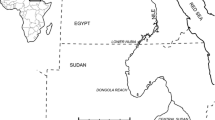Abstract
The faunal sample from Kadzi, an Early Iron Age site in the Zambezi Valley, is the first substantial sample for that period and region in Zimbabwe. The site appears to have been a permanent or semipermanent settlement. The sample consists mainly of bovid remains, dominated by buffalo as a single species, suggesting special hunting skills. The presence of some domestic animals proves that these animals were available to the inhabitants of the site. Their status in the community is, however, uncertain. Possible explanations for the small number of cattle fragments could be the result of paucity of livestock for environmental or other reasons, or may reflect differential disposal of cattle bones as part of ritual expression. Environmental conditions, particularly the possible presence of the tsetse fly, could also have been a factor in determining the distribution of livestock and herd sizes in the region. The faunal remains provide valuable insight into the subsistence strategies of the period. They also provide evidence about animals present in the region during the first millennium AD.
Résumé
Des restes animaux provenant du Kadzi, un site de l’âge du fer supérieur dans la vallée du Zambeze, fournissent pour la première fois des données pour cette période et cette région du Zimbabwe. Le site a été probablement occupée d’une manière permanente ou semipermanente. Les restes se composent principalement d’ossements bovins, dominés par le Buffle comme seule espèce, ce qui temoigne de techniques de chasse avancées. La présence (parmi les ossements) d’un certain nombre d’animaux domestiques indique qu’ils étaient disponibles pour les habitants du site, mais leur statut dans la communauté reste ambigu. Le nombre peu élève de fragments d’ossements de boeuf est peutêtre lié à la taille réduite du troupeau pour des raisons environnementales ou autres ou bien résulte de l’utilisation rituelle de certains ossements. Les conditions environnementales et plus particulièrement la présence probable de la mouche Tse Tse ont pu également être des facteurs determinant pour la repartition du boeuf dans la région et la taille du troupeau. Ces restes faunistiques fournissent ainsi des informations importantes aussi bien sur les stratégies de subsistance pour la période considérée que sur les animaux présents dans la région au cours du 1er millénaire AD.
Similar content being viewed by others
References
Ansell, W. F. H. (1978).The Mammals of Zambia, National Park and Wildlife Service, Chilanga.
Brain, C. K. (1988). Evidence from the Swartkrans cave for the earliest use of fire.Nature 336: 464–466.
Buyst, H. (1977). The epidemiology of sleeping sickness in the historical Luangwa valley.Année Société Belge Medicine Tropique 57: 349–359.
Fuller, C. (1923).Tsetse in the Transvaal and Surrounding Territories: An Historical Review, Union South Africa, Department of Agriculture, Entomology Memoirs, Pretoria, Vol. 1, No. 1.
Holleman, J. F. (1952).Shona Customary Law, Oxford University Press, London.
Huffman, T. N. (1990). Broederstroom and the origins of cattle-keeping in southern Africa.African Studies 49(2): 1–12.
Isaacs, N. (1970).Travels and Adventures in Eastern Africa, Facsimile reprint, Struik, Cape Town.
Lambrecht, F. L. (1964). Aspects of evolution and ecology of tsetse flies and Trypanosomiasis in prehistoric African environment.Journal of African History 5: 1–24.
Maggs, T. O’C. (1984). The Iron Age south of the Zambezi. In Klein, R. G. (ed.),Southern African Prehistory and Palaeoenvironments, Balkema, Rotterdam, pp. 328–360.
Meester, J. A. J., Rautenbach, I. L., Dippenaar, N. J., and Baker, C. M. (1986).Classification of Southern African Mammals, Transvaal Museum Monograph No. 5., Transvaal Museum, Pretoria.
Mitchell, P. J., and Plug, I. (1997). Ritual mutilation in Southern Africa: Gender and ethnic identities and the possibilities of archaeological recognition (in preparation).
Peters, J. (1986).Osteomorphology and osteometry of the appendicular skeleton of African buffalo, Syncerus caffer (Sparrman, 1779) and cattle, Bos primigenius f taurus Bojanus, 1827. Occasional papers, Laboratorium voor Paleontologie. Rijksuniversiteit Gent, No. 1., Ghent.
Peters, J. (1988). Osteomorphological features of the appendicular skeleton of African buffaloSyncerus caffer (Sparrman, 1779) and cattle,Bos primigenius f. taurus Bojanus, 1827.Zeitschrift fur Säugetierkunde 53: 108–123.
Plug, I. (1979). Namakala and Nanga: Faunal report on two Early Iron Age sites, ZambiaSouth African Archaeological Bulletin 34: 123–126.
Plug, I. (1988).Hunters and Herders: An Archaeozoological Study of Some Prehistoric Communities in the Kruger National Park, D.Phil. thesis, University of Pretoria, Pretoria.
Plug, I. (1989). Aspects of life in the Kruger National Park during the Early Iron Age.South African Archaeological Society Goodwin Series 6: 62–68.
Plug, I. (1990). Terrestrial molluscs and archaeological stratigraphy: A cautionary tale.South African Journal of Science 86: 204–205.
Plug, I. (1993a). The macrofaunal remains of wild animals from Abbot’s Cave and Lame Sheep Shelter, Seacow Valley, Cape.Koedoe 36: 15–26.
Plug, I. (1993b). The faunal remains from Nanda, an Early Iron Age site in Natal.Natal Museum Journal of Humanities 5: 99–107.
Plug, I. (1994). Randjies: The faunal remains from a Late Iron Age site, Northwestern Transvaal.Research by the National Cultural History Museum 3: 119–129.
Plug, I. (1996). Seven centuries of Iron Age traditions at Bosutswe, Botswana: A faunal perspective.South African Journal of Science 92: 91–97.
Plug, I., and Roodt, E. (1990). The faunal remains from recent excavations at uMgungundlovu.South African Archaeological Bulletin 45: 47–52.
Plug, I., and Voigt, E. A. (1985). Archaeozoological studies of Iron Age communities in southern Africa. In Wendorf, F., and Close, A. E. (eds.),Advances in World Archaeology 4: 189–238.
Pwiti, G. (1994). Prehistoric fanning communities of the mid-Zambezi valley, northern Zimbabwe.Zimbabwean Prehistory 21: 7–14.
Pwiti, G. (1996).Continuity and Change, Studies in African Archaeology 13, University of Uppsala, Uppsala.
Skinner, J. D., and Smithers, R. N. (1990).The Mammals of the Southern African Subregion. University of Pretoria, Pretoria.
Voigt, E. A., and Plug, I. (1981).Early Iron Age Herders of the Limpopo Valley, Transvaal Museum report to the Human Sciences Research Council, Pretoria.
Von Den Driesch, A. (1976).A Guide to the Measurement of Animal Bones from Archaeological Sites, Peabody Museum Bulletin 1, Harvard University, Cambridge, MA.
Author information
Authors and Affiliations
Rights and permissions
About this article
Cite this article
Plug, I. Early iron age buffalo hunters on the Kadzi river, Zimbabwe. African Archaeological Review 14, 85–105 (1997). https://doi.org/10.1007/BF02968368
Issue Date:
DOI: https://doi.org/10.1007/BF02968368




